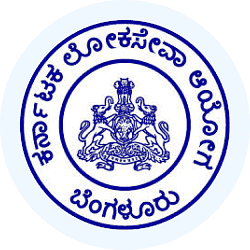KPSC KAS (Karnataka) Exam > KPSC KAS (Karnataka) Notes > KPSC KAS Preparation: All subjects > Aryan Invasion
Aryan Invasion | KPSC KAS Preparation: All subjects - KPSC KAS (Karnataka) PDF Download
| Download, print and study this document offline |
Please wait while the PDF view is loading
Page 1 Ayans were people who lived in the regions near Caspian Sea and led a nomadic life. They spoke languages similar to Sanskrit. Around 2000 BC, Aryans started shifting towards the northern part of Indian peninsula. As part of their shift towards India, they settled in Iran. By 1500 BC, Aryans started moving towards the regions occupied by Indus valley civilization. They reached India moving across the Hind Kush mountain range and through the Khyber Pass. The north western part of India where the Aryans occupied came to be known as Sapta Sindhu region. It means the land of 7 rivers. The seven rivers form which this region got its name are – Sindhu (Indus), Saraswati, Jhelum, Chenam, Satluj, Ravi and Beas. The horses and the chariots pulled by the horses assisted Aryans in their journey to India. The idea about the life and culture of the Aryans can be analyzed from the Vedas. The Vedic culture can be broadly divided into two ? Early Vedic culture which extends from 1500 BC to 1000BC. The first Veda, Rigveda was written during this time ? Later Vedic culture which extends from 1000 BC to 600 BC. Other three Vedas, namely AtharvaVeda, YajurVeda and SamaVeda were written during this period. ARYAN INVASION Page 2 Ayans were people who lived in the regions near Caspian Sea and led a nomadic life. They spoke languages similar to Sanskrit. Around 2000 BC, Aryans started shifting towards the northern part of Indian peninsula. As part of their shift towards India, they settled in Iran. By 1500 BC, Aryans started moving towards the regions occupied by Indus valley civilization. They reached India moving across the Hind Kush mountain range and through the Khyber Pass. The north western part of India where the Aryans occupied came to be known as Sapta Sindhu region. It means the land of 7 rivers. The seven rivers form which this region got its name are – Sindhu (Indus), Saraswati, Jhelum, Chenam, Satluj, Ravi and Beas. The horses and the chariots pulled by the horses assisted Aryans in their journey to India. The idea about the life and culture of the Aryans can be analyzed from the Vedas. The Vedic culture can be broadly divided into two ? Early Vedic culture which extends from 1500 BC to 1000BC. The first Veda, Rigveda was written during this time ? Later Vedic culture which extends from 1000 BC to 600 BC. Other three Vedas, namely AtharvaVeda, YajurVeda and SamaVeda were written during this period. ARYAN INVASION Early Vedic Culture (1500 -1000 BC) We get information regarding the life of the people in the Sapta Sindhu region from the Rigveda. The contents of Rigveda were earlier memorized and orally transmitted among generations. It was in 1040 AD, that it was documented in a palm leaf for the first time. The contents of Rigveda are divided into 10 chapters. These chapters are called Mandalas. It consist of 1028 hymns or mantras. The main deity was Indra. Social Structure during early Vedic Period: Family was the basic unit in the tribe. It was known as Griha or Kula. Men and women enjoyed equal right in the family. The eldest man of the family was known as Grihapati and the eldest woman was known as Sapatni. A number of families formed the tribe. Tribe was known as Jana. The eldest member of the tribe was the head of Janas. To discuss the day to day activities of the tribe, assemblies in the name, Vidhatha, Sabha and Samiti were held. Cattle rearing and Farming were the main occupation of the people. The one with more cattle and farm was considered superior than the others. To establish their supremacy, people engaged in war. This type of battle was called Gavishti. Yagas and sacrifices were held for the victory in the battle. The society consisted of 3 types of people – Priests, Soldiers and Common people.Read More
|
82 videos|83 docs
|

|
Explore Courses for KPSC KAS (Karnataka) exam
|

|
Signup for Free!
Signup to see your scores go up within 7 days! Learn & Practice with 1000+ FREE Notes, Videos & Tests.
Related Searches
















